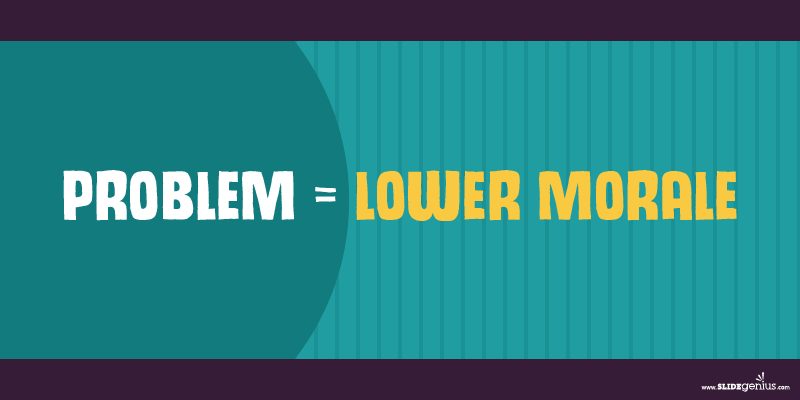What makes a successful pitch deck?
Is it the speaker that makes it more effective? The way they speak and present themselves in front of a crowd? Or is it the pitch deck that is sure to leave your audience in awe?
The short, definitive answer is that for a sales pitch to be successful, you need to devote time and effort to get both right.
Here at pitchdeck.com, we specialize in pitch deck design. Since 2012, we’ve helped more than 3,000 clients. In fact, we’re the world’s leading pitch deck design firm.
We know what it takes to make a pitch deck that works.
If you want to know the three things that make a killer pitch deck, here are the fundamentals that should never be left out:
Address the Problem
Ideas for new products and services stem from issues that need to be addressed. With a sales pitch, you can present this new concept and see if it piques the interest of potential investors and customers. But to be successful, you need to really understand the problem you’re looking to solve.

Not everyone you’re pitching to will understand the problem. Many investors may not know anything about it. You need to make it clear to them, help them feel the pain of those dealing with this problem.
Show situations where your product could help in a significant way. If your pitch deck is using bullet points, make sure you’re not filling the slide with it. After all, context can help with the bigger picture. When using images, remember that it must be relevant to what you’re talking about.
Pitch Your Solution
Once you’ve made your audience realize how your product or service can help them, the next challenge would be illustrating why it’s worth investing in and why they should choose you over other companies. Your potential investor knows there’s a problem. So why would they trust your brand to solve it?
Point out the unique aspects of what you’re doing make you stand out. Pitch the facets that you are most excited about. Genuine emotion inspires confidence. You know this opportunity better than they do. If you’re not jumping out of your socks, they’ll look for investment opportunities elsewhere.

Address these things early in the pitch and build on them throughout the middle portion of your pitch deck.
Statistics provide clear, quantifiable evidence of the benefits you’re offering. A study can establish legitimacy. Surveys or testimonials demonstrate social authority, the idea that it’s a safe investment based on the reception of others.
Customers want to know how your offering will help make their lives easier. This will tell them that you’re offering a solid investment opportunity.
End Your Pitch Deck with Dollar Signs
The first two parts of any good pitch deck can be very visceral, emotional, even abstract dependent upon what you’re doing. But by the end you need to be ready to talk about finances. Every potential investor or customer needs to know the value.

For investment decks, this will look like your predicted revenue, timelines, and use of funds. The more they believe you know what you’re doing and that you’ve done it before, the easier it will be for them to make that decision.
For sales decks, discuss your pricing structure, guarantees or delivery fees, cost versus savings. If they can see the money they will have in the long run and not the money they are parting with now, it will be easier for your pitch to drive sales.
Your Pitch Deck Must Be Perfect
Just because you’ve filled all your slides with the necessary information doesn’t mean it’ll fly with your audience the first time. Practice—unless the design and words are stellar, your delivery will struggle.
The content of your pitch deck must be clear, concise, and coherent for it to be considered a success. Combine that with tasteful design and a confident speaker, and you’re ready to go.
At pitchdeck.com, we help you do exactly that.
We provide copywriting and pitch deck design services to clients worldwide. We’ve helped more than 3,000 brands tell their stories and raise hundreds of millions of dollars in investments and sales.
If you need help perfecting your pitch deck, we’re only a call away!
For more information about our services, don’t hesitate to contact us today!



















